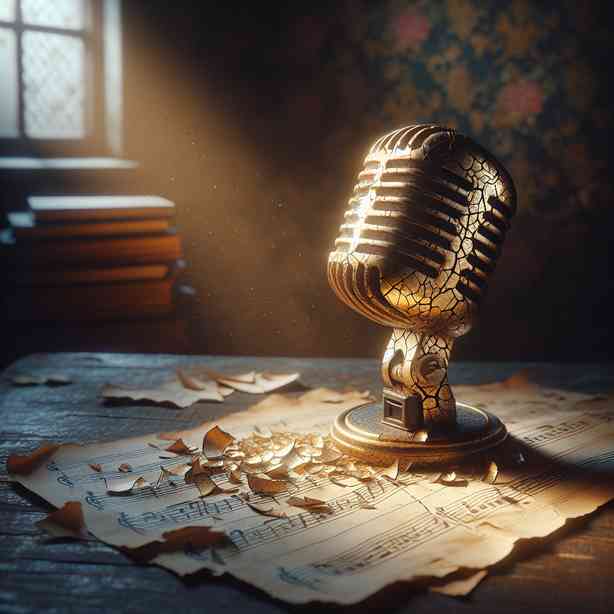
The Beauty of a Broken Voice
In a world that often prioritizes perfection, the beauty of a broken voice stands out as a profound reminder of the complexities and intricacies of the human experience. When we think of a voice, we might first imagine it as a medium for communication, a tool to express thoughts, feelings, and ideas. Yet, the essence of a voice goes beyond mere sound; it embodies the soul and carries the weight of each person’s unique journey. The concept of a “broken voice” transcends physical deficiencies or imperfections; it encapsulates the emotional and psychological scars we all carry.
A broken voice can manifest in various forms: it might be a voice that trembles with anxiety, one that shakes with the weight of unspoken traumas, or even one that falters due to the sheer effort of living authentically in a world that often expects conformity. These voices, rather than being lesser, hold a haunting beauty that invites empathy and connection. They often resonate deeply with those who hear them, as they tell stories of struggle, resilience, and the will to rise above adversity. This beauty is not found in the absence of pain but rather in the very presence of it, interwoven with courage and hope.
Many artists have beautifully illustrated this idea through their music, poetry, and storytelling. Icons like Leonard Cohen and Fiona Apple are known for their raw, emotional delivery that often showcases the vulnerability inherent in a ‘broken’ voice. Their music speaks to those who have felt excluded or marginalized, resonating with listeners who may be experiencing their own forms of imperfection. In each quiver and crack, there is a heartfelt authenticity that draws people closer; these artists remind us that vulnerability is, in fact, a source of strength.
In literature, broken voices often serve to highlight the depth of character. The protagonists in many great novels are defined by their struggles, giving them an authenticity that readers can relate to. The beauty in their brokenness offers insight into the human condition, revealing the nuances of emotion that define our existence. Authors like Maya Angelou and Haruki Murakami often weave narratives that mirror the complexities of broken voices, allowing readers to find solace in shared experiences. Through their words, we are reminded that vulnerability is not a weakness, but rather a testament to our humanity.
Moreover, the concept of the broken voice extends beyond individual narratives; it speaks to broader societal issues. Many marginalized groups have voices that have been historically silenced or misunderstood. The beauty in these broken voices lies in their power to spark change. Activism rooted in personal stories has the capacity to shift perceptions, challenge injustices, and inspire communities to unite in solidarity. The voices that break through societal norms and expectations demand attention, urging us to listen and engage with perspectives that may differ from our own.
In our daily lives, we often encounter moments where voices break. Perhaps it is during a heartfelt conversation with a friend or while listening to a moving speech. These moments remind us that it is okay to be imperfect, to falter, and to struggle. When we allow ourselves to connect with these broken voices, we create a space for healing and understanding. This emotional exchange fosters deeper connections and encourages a culture of empathy, where individuals feel safe to express their own vulnerabilities.
Furthermore, the beauty of a broken voice has therapeutic implications. Many turn to art, music, or writing as a form of catharsis, channeling their brokenness into creativity. The process of articulating pain, fear, and longing can be liberating, transforming anguish into something meaningful. Therapy often employs narrative therapy techniques, where individuals recount their stories to reconstruct their identities and find healing through self-expression. Here, the broken voice becomes a powerful tool for transformation, enabling individuals to rediscover their worth and reclaim their narratives.
Raising awareness about the beauty of broken voices is crucial in fostering a more inclusive society. We must challenge the societal pressure to maintain a facade of perfection and embrace the richness of our shared human experience. Encouraging dialogues around mental health, trauma, and emotional wellbeing creates an environment where individuals feel validated and understood. It is essential to emphasize that every broken voice deserves to be heard, regardless of its imperfections.
In celebrating these voices, we nurture a culture that values authenticity over uniformity. We learn to appreciate the nuances that make us human, recognizing that our struggles contribute to our identity. Rather than shying away from vulnerability, we should embrace it as an integral aspect of our existence, allowing our brokenness to unite us in our shared challenges.
In conclusion, the beauty of a broken voice is a profound testament to the complexities of the human experience. It serves as a reminder that our imperfections hold immense value, providing us with opportunities for connection, empathy, and growth. By embracing our broken voices and those of others, we create spaces for understanding and healing, allowing our shared narratives to intertwine in a tapestry of resilience. Through this acknowledgment, we foster a more compassionate world that recognizes beauty through the lens of brokenness, ultimately celebrating the diversity of the human spirit. In every quiver and tremor, a story unfolds, rich with the beauty of being human.


